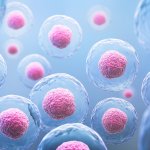2014 was a busy year for stem cell research. Here we take a look back at the year’s leading developments.
2014 was a successful year for stem cell research in autoimmune diseases; an autoimmune disease is a condition whereby the body’s immune system attacks cells the body’s own cells. In September a discovery for type 1 diabetes, a condition where the body stops making insulin, gave hope to patients that stem cells could be converted into insulin-producing cells.
Other announcements for autoimmune diseases include stem cells being used to aid the survival in scleroderma patients and placental stem cells being used to replace damaged cells with healthy ones in patients with multiple sclerosis.
There have also been exciting discoveries made in other areas, possibly the most exciting announcement of 2014 was that of paralysed man, Derek Fidyka, who was able to walk again after pioneering surgery to repair his spine using stem cells. The surgical team were able to use Mr Fidyka’s stem cells from the olfactory bulb (in the brain) growing them in the lab and then injecting them into his spinal cord. Mr Fidyka is now able to walk with the aid of a walking frame and can now even drive a car, offering hope to millions of paralysed people around the world.
The stem cell discoveries of 2014 have been wide and varied from many areas of medicine from autoimmune disease to tissue engineering to neurological discoveries and more. 2015 offers the opportunity to build on the discoveries made in the last year and hopefully see steps being made into these discoveries being made available to the general public as effective stem cell therapies.







